Art and Artists
Copper Tube Bender | How to Bend Copper Pipe
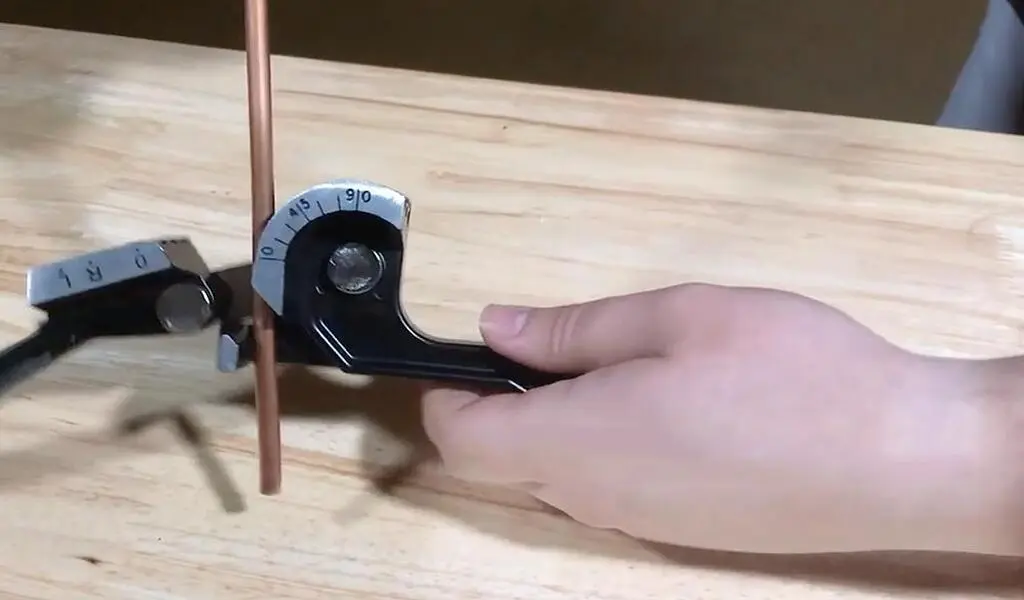
Despite the availability of a broad choice of plumbing pipes and copper tubing, many people prefer the durability of conventional copper pipes.
Copper pipes may be purchased in rolls for use of walls, but put the pipes on the surface of the wall, in which case you will need to bend your pipes.
Depending on the method used, copper pipes can be bent with or without the use of specialized plumbing gear.
Here are some tips for bending copper pipe.
Applications for copper pipes
Copper pipes are commonly used as water supply pipes in the home. Because of their ornamental features, these pipes are frequently employed as crafting materials.
Although copper is flexible and simple to work with, it is not soft enough to bend precisely on its own.
Bending copper pipes without the proper equipment can cause pipe collapse, which means the pipe may create uneven edges rather than a smooth curve at the intended bend point.
This can damage the aesthetic appearance of handicrafts and obstruct water flow in plumbing.
How to Use a Tube Bender to Bend Copper Pipe
A manual tube bender is a compact, low-cost instrument that bends copper and other soft metals to a certain radius.
Manual tube benders are commonly seen in dual tube benders. The copper pipe can be put down at the center of the dual tube bender.
A gauge specifies the bend angle, which ranges from 0 to 90 degrees.
The tube bender’s upper piece (called a shoe) goes along the bend, ensuring a smooth and flawless curvature.
Advantages
- Bending that is precise and smooth
- Simple to use
- There is no need to heat the pipes.
Disadvantages
- Each pipe size causes a different bender.
- Expensive
- Bending copper pipe without a tube bender
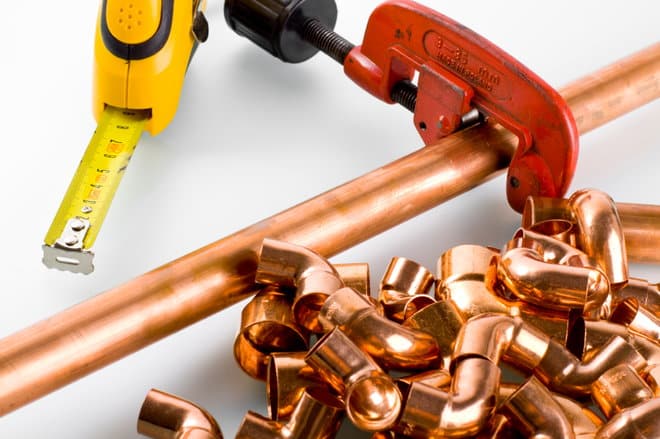
Bending Copper Pipe Tips
Pipe Support: It is critical to support the copper pipe over the entire length of its bend to achieve a constant form. Support might be located either within or outside of the pipe.
Bend slowly: Even if the copper pipe is securely supported, bending it fast may cause it to pinch. If you gain the shape, ripples may form on the inside of the curve. Always bend gradually.
Shape the Bend: The easiest way to bend copper tubing to a 4- to 8-inch radius is to bend it over a cushioned knee. However, other curved shaping materials such as metal cans, buckets, or huge pipes can also be used.
Copper is a costly metal. If you’re attempting to bend copper for a plumbing job, engaging a trained plumber to bend the pipes may be more cost-effective than purchasing many pipes if your attempts fail.
Bend the pipe with a spring.
Tube-bending springs go within the copper pipe and function as a support to help disperse the force.
Severe bends of up to 180 degrees are possible with tube springs.
Tube springs are available in a variety of sizes to accommodate copper pipes ranging in diameter from 1 to 4-inch to 5/8-inch.
To bend a copper pipe with a tube spring, do
- Mark the location on the copper tube where you wish to make the bend with an indelible marker. The mark should be placed at the bend’s radius’s outermost point.
- Remove any burrs from the cut end of the copper pipe.
- Select the appropriate spring size for the pipe. Some springs fit within the pipe, while others fit around the outside.
- If the spring is longer than the pipe, after bending the pipe, you may simply extract the spring. Join the spring’s end to a wire if it’s too short.
- Bend the copper pipe over your knee after cushioning it with a soft towel. To get a smoother bend, move the pipe back and forth to the left and right sides of your knee.
- Take out the spring. If removing the spring is difficult, try turning it clockwise.
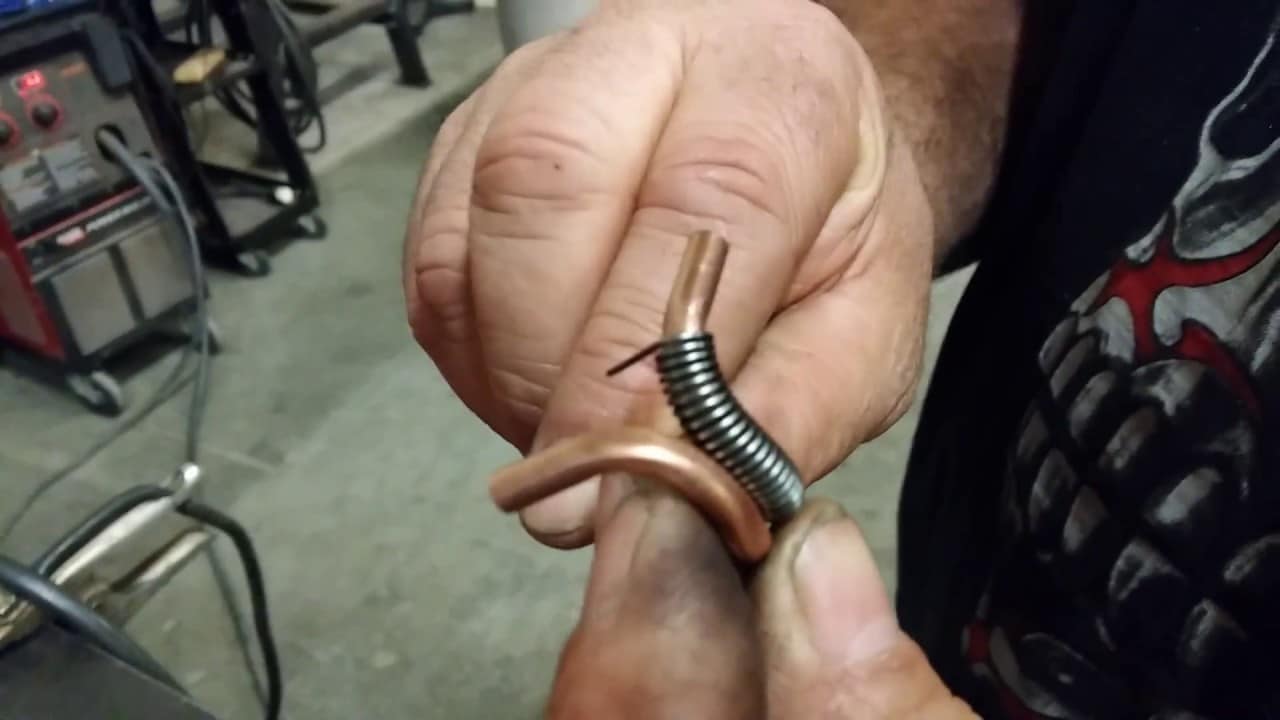
Bend the pipe using sand or salt.
The dense materials packed within the copper pipe generate a similar effect to pipe bending springs.
They keep the bending force from being concentrated in a single place.
The force is instead dispersed throughout the full length of the curve. It is possible to use fine sand and salt.
To bend the pipe using sand or salt:
- Straighten the copper tube or pipe. It does not have to be exactly straight; it simply has to be straight enough to allow the material to flow.
- Tape the copper pipe’s bottom with duct tape or electrical tape.
- Inject sand or salt through a funnel into the copper pipe.
- Tape the opposite end of the pipe shut.
- Form the pipe into the appropriate shape.
- Rip off the tape and empty the container of sand or salt.
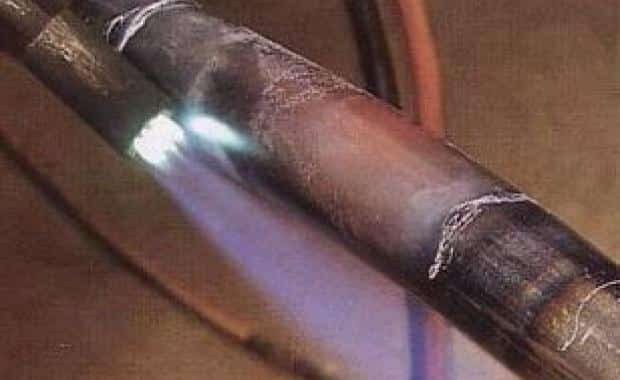
Bend the pipe with a pipe-bending tool.
A tube bender is a tiny, affordable, specialized instrument that accomplishes one thing very well. It bends copper and other soft metal pipes to a certain radius of 2 or 3 inches.
A tube bender, which looks like a pair of pliers, is used to insert pipes down the center. A marked gauge specifies the bend’s angle, which ranges from zero to 90 degrees.
The upper section of the tool, known as the shoe, goes along with the bend, ensuring a clean curvature.
A tube bender is a fantastic purchase for anyone who needs to bend copper pipes regularly.
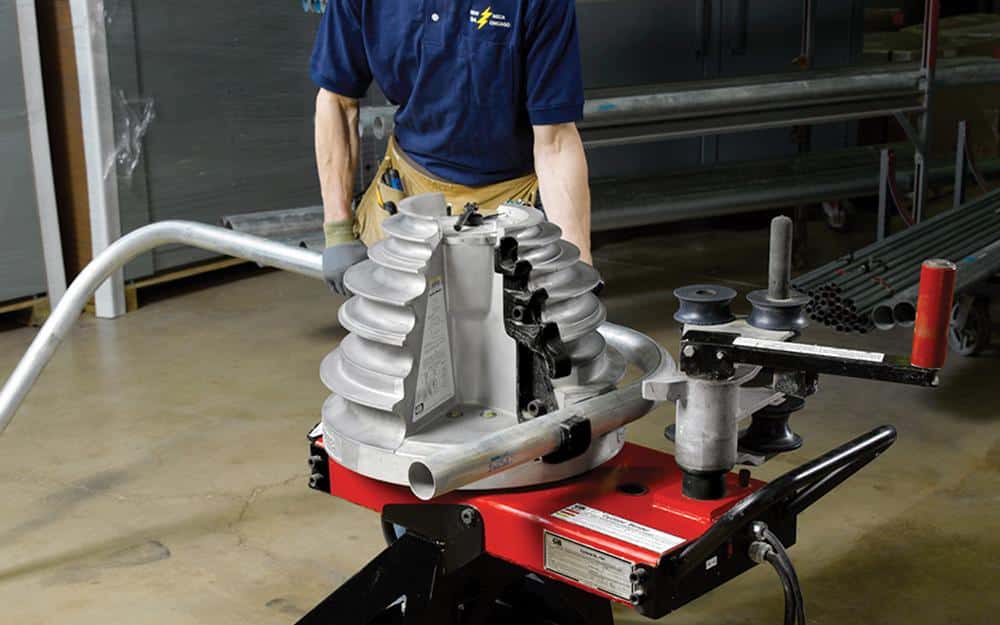
Final Words
Copper pipes are widely used in plumbing, air conditioning and refrigeration, fire sprinklers, and crafts.
Copper pipes are bent using the best quality copper tube bender or common household items, such as springs or sand.
Each technique differs in terms of simplicity of usage and the smoothness of the finish after bending.
This article investigates and contrasts the ways for bending a copper pipe. If you want to learn more, please contact us.
Related CTN News:
How to Have A Conversation On Philanthropy With Your Clients As a Financial Advisor
Best Mobile Apps to Master Coding
Get Easy Quizzz for Your License Test and Other Competitive Exams

Art and Artists
Artist Anna Chekh Showcases “Diversity of Shadow Man” at Icon Siam

International contemporary artist Anna Chekh presents “Diversity of Shadow Man.” The artist showcases her trendy 3D art objects, a large Shadow Man sculpture, digital art, art prints, and innovative 3D pictures at the ArtVentureNFT gallery (1st floor, Icon Siam).
Step into the captivating world of “Shadow Man” by international contemporary artist Anna Chekh, where her iconic art character unveils the rich tapestry of her artistic vision. This enigmatic figure symbolizes curiosity and exploration of the world while steadfastly guarding his private life and values, embodying a faceless hero for the public. Shadow Man reflects the spirit of our generation, resonating with profound insights and captivating storytelling.

The exhibition features a collection of unique art objects from Chekh’s acclaimed ‘Shadow Man’ series, previously showcased at prestigious international venues including DIFC Art Nights in Dubai and the Victoria & Albert Museum in London. Soon, this compelling collection will be presented in Miami, New York, and Venice.

Alongside the ‘Shadow Man’ series, Anna Chekh presents a captivating selection of paintings, art prints, and digital artworks. Delve into the symbolic narrative crafted by Chekh, blending neo-symbolism with surrealistic elements to offer a profound visual journey into the human psyche and societal themes.
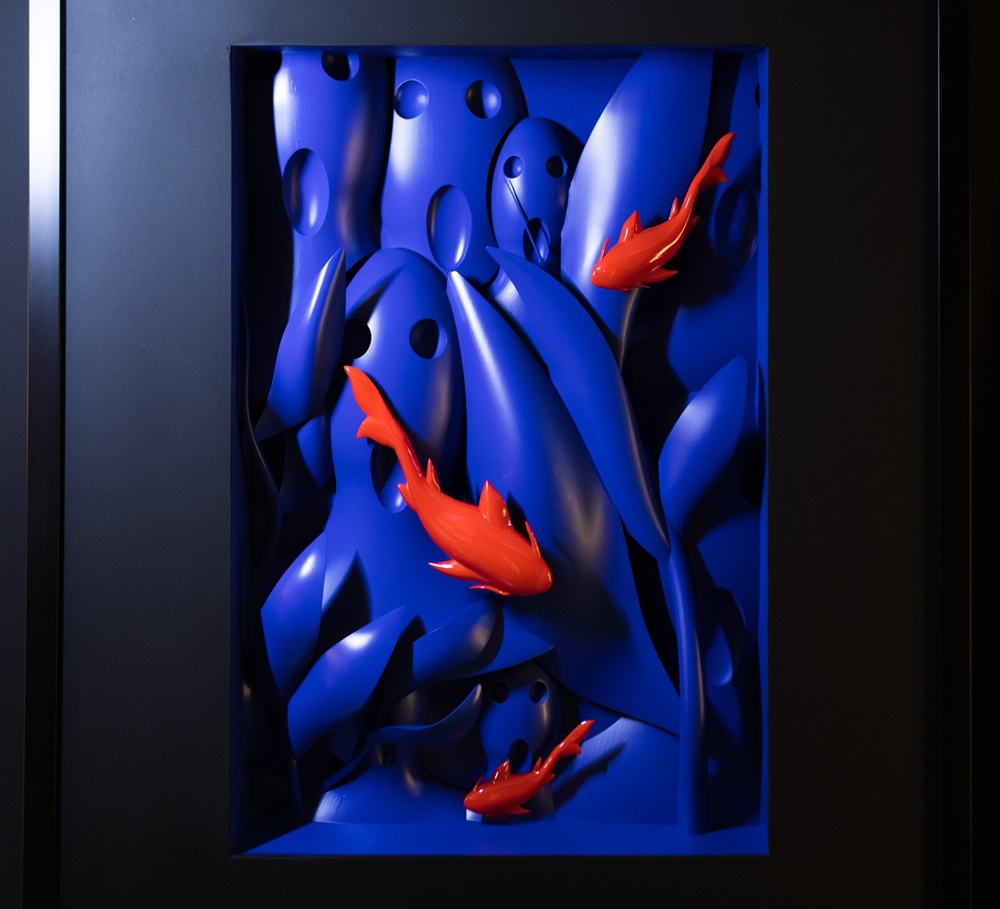
As a multidisciplinary artist, Anna Chekh extends her creative vision across various mediums, from traditional canvases and sculptures to cutting-edge NFTs, interactive installations, and innovative web 3.0 projects.
Her artworks, celebrated for their depth and innovation, have been showcased at esteemed venues worldwide from New York and Tokyo to Bangkok and Dubai, including the Carrousel du Louvre in Paris.
Anna has received numerous prestigious awards, including Best Innovative NFT 2024 and Best Phygital NFT 2023 (Dubai, Burj Khalifa).
People Also Reading:
ART Chiang Rai Exhibition June 1st Showcasing: The Best of Watercolors
ART Chiang Rai Exhibition June 1st Showcasing: The Best of Watercolors
Art and Artists
The Enduring Appeal of Custom Vinyl Stickers: Creativity on a Stick
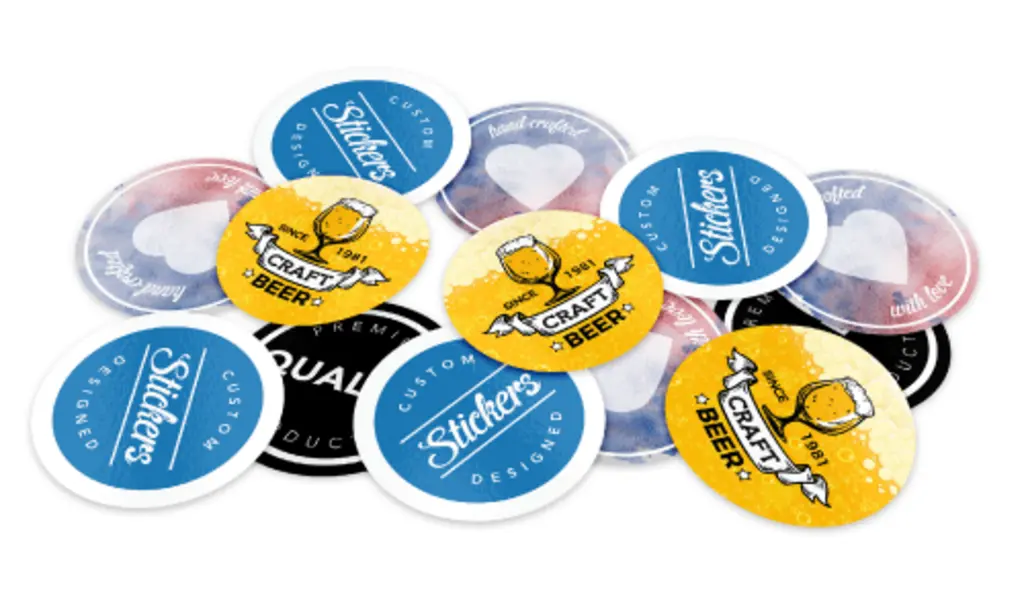
In a digital age where personal and business branding evolves at lightning speed, one tactile marketing tool has remained as relevant and effective as ever: custom vinyl stickers. Versatile, durable, and colorful, these stickers offer an impactful way to convey messages, demonstrate personality, and even enhance brand visibility. This detailed exploration of custom vinyl stickers will reveal why they continue to be a preferred choice for both individuals and businesses, detailing their uses, benefits, and creative possibilities.
The Allure of Vinyl Stickers
Vinyl stickers aren’t just popular; they are a phenomenon in their own right. Their robustness and aesthetic appeal make them ideal for a wide range of applications, from car decals to storefront decorations. Here’s why they stand out:
Durability: Vinyl is a strong, flexible material resistant to environmental factors like UV rays and moisture. This makes vinyl stickers perfect for both indoor and outdoor use, as they don’t fade quickly or peel off easily.
Quality: The quality of printing on vinyl is generally higher than on other materials. Colors appear brighter and more vibrant, which is crucial for capturing attention and conveying specific styles or brands.
Customization: The adaptability of vinyl allows for a myriad of customization options in size, shape, color, and finish. Whether you need a glossy finish to catch the light or a matte finish to reduce glare, vinyl stickers can be tailored to meet specific requirements.
Uses of Custom Vinyl Stickers
The uses of custom vinyl stickers are as varied as they are imaginative. Here are some of the most popular applications:
Personal Use:
- Vehicle Decals: Custom vinyl stickers are often used to decorate cars, motorcycles, and bicycles, allowing enthusiasts to showcase their unique style or membership in clubs and communities.
- Home Decor: Vinyl stickers can be applied to walls, furniture, and appliances, making them an easy way to revitalize a space without permanent changes.
- Personal Belongings: Laptops, phone cases, and water bottles are commonly adorned with vinyl stickers to personalize everyday items.
Business Use:
- Branding: Businesses use custom vinyl stickers as a cost-effective branding tool. Placing logo stickers on products, packaging, and even at physical locations enhances brand visibility.
- Promotions: Companies often give away vinyl stickers as part of promotional campaigns. Because they are seen as a value-added item, stickers can improve customer satisfaction and retention.
- Wayfinding: Vinyl stickers are excellent for directional purposes within businesses, helping guide customers and creating a more organized space.
The Design Process: From Concept to Completion
Creating custom vinyl stickers is an art form that involves several steps to ensure the final product perfectly captures the intended aesthetic and functional needs.
Designing the Artwork: The first step involves designing the artwork. This can be done using graphic design software like Adobe Illustrator or Photoshop. The design must consider the intended size of the sticker to ensure that details are not lost in translation from screen to print.
Choosing the Right Vinyl: There are different types of vinyl, each suitable for different conditions. For instance, cast vinyl is better for outdoor use due to its ability to withstand harsher conditions, whereas calendared vinyl might be sufficient for indoor use.
Printing and Cutting: Once the design is finalized, it’s printed using high-quality digital printers. After printing, the stickers are cut into the desired shape. Precision cutting is essential, especially for complex designs or shapes.
Quality Control: Before the stickers are packaged and sent out, they undergo quality control checks to ensure that every sticker meets the set standards of durability, color accuracy, and adhesion.
Creative Ideas for Vinyl Sticker Designs
Seasonal Themes: Capitalize on holiday seasons by creating themed stickers that can be used as part of promotional packages or as seasonal decorations.
Inspirational Quotes: Stickers with motivational quotes are perennial favorites. They can serve as personal reminders or inspirational gifts for others.
Artistic Collaborations: Collaborating with artists to create limited-edition sticker designs can add an exclusivity factor that appeals to collectors and enthusiasts.
Eco-Friendly Messages: With increasing awareness of environmental issues, stickers promoting eco-friendly practices or green branding can resonate well with a conscientious audience.
Conclusion
The charm of custom vinyl stickers lies in their simplicity and the profound impact they can have. Whether used to inject a bit of fun into personal items, add a professional touch to business products, or anything in between, vinyl stickers are an excellent choice for those looking to make a statement in a durable, customizable, and cost-effective way. As they continue to stick around in various forms, it’s clear that when it comes to making a mark, few options are as enduring—and adhesive—as vinyl stickers.
Art and Artists
Exploring Cloud Imagery and Cultural Expression: An Interview with Huaqi Liu

Today, we have the pleasure of interviewing Huaqi Liu, a talented artist whose journey into the world of painting began at the age of 16. Over the years, Liu has explored various artistic styles, beginning with traditional Chinese painting. As he delved deeper into his craft, his journey led him to evolve his artistic expression, and Liu’s passion for painting endured and flourished. This evolution has been marked by a natural progression, driven by his inner creative spark and ongoing exploration of different artistic mediums and techniques.

Q: Could you discuss some of the awards and recognition you’ve received in recent years, such as the Mayoral Certificate of Recognition from the City of Baltimore in 2022?
Huaqi Liu: The Mayoral Certificate of Recognition was my project where I taught children to draw and handled technical aspects like video tech. We connected children from Baltimore and Korea through artwork exchanges, culminating in an exhibition of the children’s art.
Q: In 2023, you gave a lecture titled “Clouds and Chinese Destiny” at the GFA department of the Maryland Institute College of Art. What was the focus of this lecture?
Huaqi Liu: I was invited by a friend who teaches at MICA. I shared my experiences from struggling to integrate into the American environment during my undergraduate studies to eventually applying for exhibitions. During the interactive session, students were interested in my projects, which led to discussions about my artwork. I shared the story about why I chose clouds as my subject, and what’s the meaning in Chinese traditional aesthetic.
Q: What style or genre of painting are you currently studying or practicing, and how would you define your own style?
Huaqi Liu: I don’t confine myself to a particular genre. Six years ago, I might have called myself an abstract artist, but now I feel it’s unnecessary to frame myself in that way.
Q: Who are some of your favorite and least favorite artists, and why?
Huaqi Liu: My top favorite artist is René Magritte because of his journey from wealth to poverty and his determination to pursue art with just a pen. I admire his innovation, especially his use of light strokes. Monet’s use of color and brushstrokes also influences my work, capturing the atmosphere and romanticism that I seek. I’m not fond of art that depicts violence or explicit sexuality as I find these themes aesthetically tiresome. I prefer art that allows for interpretation and symbolism, fostering a connection between the artist and the viewer.
Q: You have numerous publications, such as the academic paper “Cloud-infused artistry: unraveling the enigmatic bond between destiny and oil painting” in 2024. Could you share the significance of these awards and publications, along with the stories behind them?
Huaqi Liu: “Cloud-infused artistry” is an academic paper I wrote at the end of 2023, published in the CPCI journal. It provides a detailed explanation of my artwork, including my techniques using clouds and colors, and explores contemporary artists’ interest in clouds. For instance, there’s a contemporary artist who visualizes weather patterns with computer-generated lines, reflecting my own interest in clouds and their connection to human fate.
Q: How do you understand the role of this art form in society, and what value does it bring to you in terms of joy or fulfillment?
Huaqi Liu: Painting is a form of emotional output for me. It’s a sanctuary in the chaos of life, allowing me to express myself authentically. Though it can be stressful, I find solace in the process. Through my art, I aim to showcase my cultural contributions as an immigrant in America and my appreciation for multiculturalism. I hope when people see my work, they can resonate with me, that’s my goal.
-

 News4 years ago
News4 years agoLet’s Know About Ultra High Net Worth Individual
-
Entertainment2 years ago
Mabelle Prior: The Voice of Hope, Resilience, and Diversity Inspiring Generations
-

 Health4 years ago
Health4 years agoHow Much Ivermectin Should You Take?
-

 Tech2 years ago
Tech2 years agoTop Forex Brokers of 2023: Reviews and Analysis for Successful Trading
-

 Lifestyles3 years ago
Lifestyles3 years agoAries Soulmate Signs
-

 Movies2 years ago
Movies2 years agoWhat Should I Do If Disney Plus Keeps Logging Me Out of TV?
-

 Health3 years ago
Health3 years agoCan I Buy Ivermectin Without A Prescription in the USA?
-

 Learning3 years ago
Learning3 years agoVirtual Numbers: What Are They For?